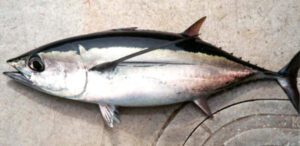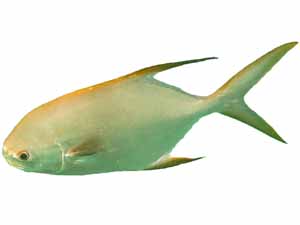Rohu fish is a very important and popular major Indian carp which is found throughout South Asian countries. It is tasty, nutritious, and healthy. It is especially a very popular fish in India. Actually, Rohu is not only a delicious fish but also a vital part of the South Asian ecosystem and culture.
Rohu (Labeo rohita) is a species of freshwater fish of the carp family. It is found mainly in rivers in South Asia. It is known by many different names such as Rui, Rohit or Roho in different regions. It is the most important and most popular among the 3 Indian major carp fish species used in polyculture systems.
Rohu fish is highly available throughout Northern, Eastern and central India, Nepal, Bangladesh, Pakistan and Myanmar. It has also been introduced in many other countries, including China, Japan, Sri Lanka, Philippines and some countries of Africa.
Traditional culture of this carp fish goes back hundreds of years in the small ponds of the eastern Indian states, and Bangladesh. The compatibility of Rohu fish with other Indian carps like Catla fish and Mrigal fish made it an ideal candidate for carp polyculture system.
Emphasis has been given to it’s genetic improvement through selective breeding in India, considering it’s importance in the culture system. Read some more information about this fish below.
Why Rohu Fish is Very Popular?
Rohu is a very popular fish fish among the South Asian people for many reasons. It is well known for it’s great taste, flavor and texture. It is very nutritious and has numerous health benefits. Preparation is very easy and simple and numerous traditional recipes available.
Rohu fish is also very popular for numerous cultural reasons. It holds a special place in Bengali culture and cusine, where it is considered as a symbol of prosperity and good luck. Rohu also has religious connections. Hindu people consider Rohu as a sacred offering to Goddess Lakshmi.
However, Rohu is well known, popular and a very important fish for its delicious taste, nutritional value, cultural significance, and its role in sustainable food production.
What are The Importance of Rohu Fish in Aquaculture and Fisheries?
Rohu fish plays a very important role in both aquaculture and fisheries. It it important to South Asian countries by bringing valuable economic, nutritional, and ecological benefits.
Rohu is a very fast-growing fish species, and it reaches optimal marketing size within a year. Commercial Rohu fish farming is a profitable business, because it offers multiple harvests and high yields per pond.
Rohu fish grow and survive on omnivorous diet, and they mainly consume aquatic plants, algae and detritus. That’s why supplemental feeding costs are less in commercial production. And it can easily thrive with other carp fish species in the polyculture system.
Commercial Rohu fish farming is very profitable, and it can be a great source for generating income and also creates employment opportunities for the marginal farmers.
Rohu contributes greatly to food security in regions with limited access to animal protein, because it is very good and sustainable source of protein. People of various income groups can take advantages of it’s high nutritional value as it’s price is affordable.
All these reasons have made Rohu a very important fish species in aquaculture and fisheries.
Characteristics
The Rohu fish is large in size with typical cyprinid shape and a conspicuously arched head. Their body is covered with cycloid scales, and the head is without scale. Their mouth is small and inferior, the lips are thick and fringed with a distinct inner fold to each lip.
They have 3 or 4 simple dorsal fin, and 12 to 14 branched dorsal fin rays. They are generally of bluish color on back, silvery on flanks and belly. Adult Rui fish can reach a length of up to 2 meters, and can weight up to 45 kg.

Diet
The Rohu is an omnivorous fish species that feeds on a wide range of aquatic plants and animals. It’s diet includes algae, insects, crustaceans, and detritus. It is known for its ability to adapt to changing environmental conditions and can switch its diet depending on the availability of food sources. In commercial production, Rohu fish can be fed with a variety of fish food pellets, vegetables, and small plants.
Reproduction/Breeding
The Rohu fish generally reach maturity withing their 2-5 years of age. The female fish generally spawn during the monsoon season, keeping to the middle of flooded rivers above tidal reach. The spawning season generally coincides with the southwest monsoon.
Spawn may be collected from rivers and reared in tanks and lakes. Artificial breeding is also possible for this fish, and currently it is a very popular method.
Behavior
The Rohu is a relatively active and social fish species that often travels in groups. It is known for its strong swimming ability and can swim against the current for extended periods.
During the breeding season, the fish becomes highly territorial and aggressive, with males vying for dominance over females. The fish is also known to migrate upstream to spawn in the shallow waters of rivers and streams.
Lifespan
Rohu has an average lifespan of around 12 to 15 years in the wild.
Distribution and Natural Habitat
The Rui fish is a freshwater species that can be found in various freshwater bodies, including rivers, streams, and lakes throughout India and some other South Asian countries
It prefers to inhabit slow-moving and still waters with muddy or sandy bottoms, where it can find an abundant supply of aquatic plants, insects, and algae.
The fish is native to the Indian subcontinent and can be found in the major river systems, including the Ganges, Brahmaputra, and Indus.
Aquaculture Significance
Rohu is a very important fish species in aquaculture or commercial fish farming business. It is a very fast-growing fish and generally reach marketing size within a year.
It consumes food from mid-level of water, and it is very good for stocking with other carp fish species. And doing so, will maximize production from your business. This fish generally consume detritus, algae and aquatic plants. They require minimum amount of supplemental feed, and this helps to reduce feeding costs in commercial fish production business.
Both demand and price of Rohu in the market is good. That’s why commercial production can be a great source for generating income and making employment opportunities for the rural people.
Nutritional Value and Health Benefits
Rohu fish is very nutritious, and consuming it provides numerous important health benefits. It is a great source of protein, vitamins, and some minerals including calcium, iron, and zinc. It is low in fat and calories, and is an excellent choice for health conscious people.
Rohu is also rich in Omega 3 fatty acids, Vitamin A, Vitamin B, Vitamin C, and Vitamin D. Vitamin D is present in a few foods and regular consumption of Rohu fish will prevent Osteoporosis, which is a Vitamin D deficiency disease.
Consuming Rohu has some health benefits. Here are some notable Rohu fish health benefits:
- It is a great source of animal protein.
- Good source of healthy fat. It is rich in Omega-3 fatty acids, which is good for the body.
- Eating Rohu on a regular basis may help to lower your cholesterol, and thus improve your heart health.
- Rohu is a natural source of vitamins, especially vitamin D. Vitamin D helps your body to maintain good health and absorb all other nutrients.
- Consuming Rohu on a regular basis, helps to avoid depression. Rohu has some components (such as vitamin D, DHA and Omega-3 fatty acids) to avoid mental health problems.
- Consumption of Rohu also helps to increase memory and reduce the risk of certain diseases.
- Last but not the least, regular consumption of Rohu fish can increase your eyesight.
Culinary Uses and Popular Dishes
The Rohu fish is mainly raised and used for food. It is a very tasty fish and has great market demand and price. It is highly valued for its delicious taste and is a popular ingredient in many traditional Indian, Bangladeshi, and Pakistani dishes.
Among the South Asians, there are hardly any people who has not tried a Rohu fish recipe, especially the Indians. Numerous traditional Rohu fish recipes available which are very easy to prepare and also delicious. Top 11 popular Rohu fish recipes or dishes are:
- Rohu Machher Murighanta
- Rohu Machher Kalia
- Rohu Fish Fry
- Rohu Jhol
- Rohu Shorshe Bata
- Doi Rohu Machher Jhol
- Rohu Machher Patishapta
- Rohu Machher Khichuri
- Rohu Fish Curry
- Rohu Fish Tacos
- Grilled Rohu with Lemon Butter Sauce
Cultural Significance
Along with great taste and nutritional value, Rohu fish holds deep cultural significance in South Asia, especially India. It features prominently in festive meals and many celebrations like weddings, Pujas, and birthdays.
This fish has also religious significance. In Hinduism, Rohu is considered an auspicious offering to Goddess Lakshmi, the deity of wealth and prosperity. In some regions, Rohu is offered to water spirits (or river Gods) as a symbol of respect and gratitude for their bounty.
As Indian cuisine (especially Bengali) gains wider recognition, Rohu’s cultural significance travels beyond South Asia. Today, many restaurants throughout the world are now offering Rohu dishes, and introducing its unique flavor and cultural associations to new audiences.
Special Notes
Rohu is a very important aquacultured freshwater fish species in South Asia. It doesn’t breed in lake ecosystems, when cultured. So induced spawning is necessary. Generally it inhabits the freshwater section of rivers. Along with being used for food, the Rohu fish is also prized as a game fish.
Rohu fish is generally very popular in Pakistan, Bangladesh, Sri Lanka, Indian States of Bihar, Assam, Odisha, Tripura, Uttar Pradesh and West Bengal. However, review full breed profile of the Rohu fish in the chart below.
| Name | Rohu |
| Kingdom | Animalia |
| Phylum | Chordata |
| Class | Actinopterygii |
| Order | Cypriniformes |
| Family | Cyprinidae |
| Genus | Labeo |
| Species | L. rohita |
| Binomial Name/Scientific Name | Labeo rohita |
| Other Names | Also known as Rui, Ruhu, Roho, Rohita |
| Breed Purpose | Mainly food |
| Special Notes | Economically a very important fish species of South Asia, very tasty, highly prized in the market, also prized as a game fish, grow relatively faster, today raised mainly for food |
| Breeding Method | Natural and artificial |
| Weight | Generally 2-3 kg in commercial farms, but can reach up to 45 kg |
| Water Type | Freshwater |
| Climate Tolerance | Native climate |
| Body Color | Reddish and silvery |
| Rarity | Common |
| Availability | South Asia |







Information provided is useful for all the concerned persons involved in fish farming and education.
Thanks for your honest opinion! Good luck!